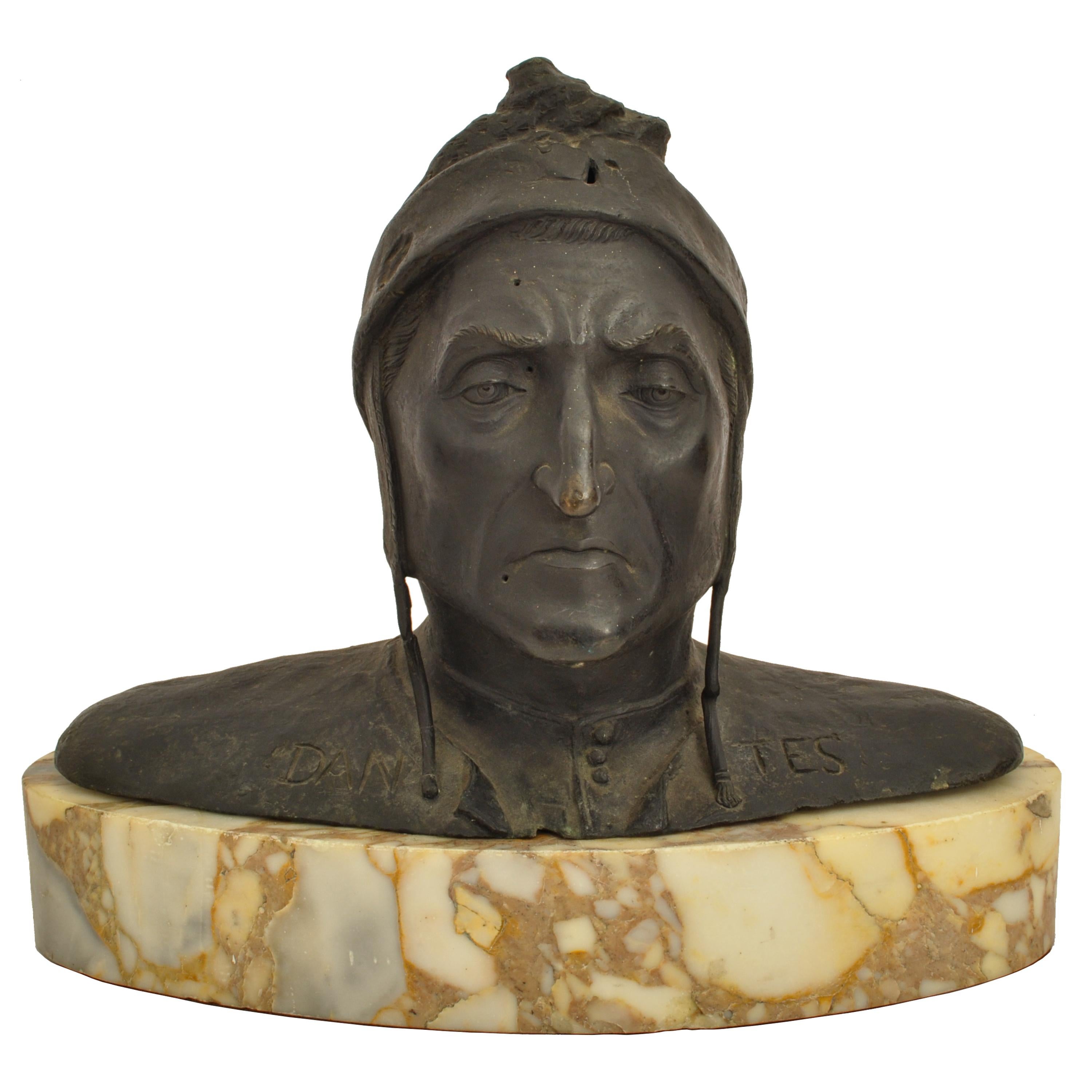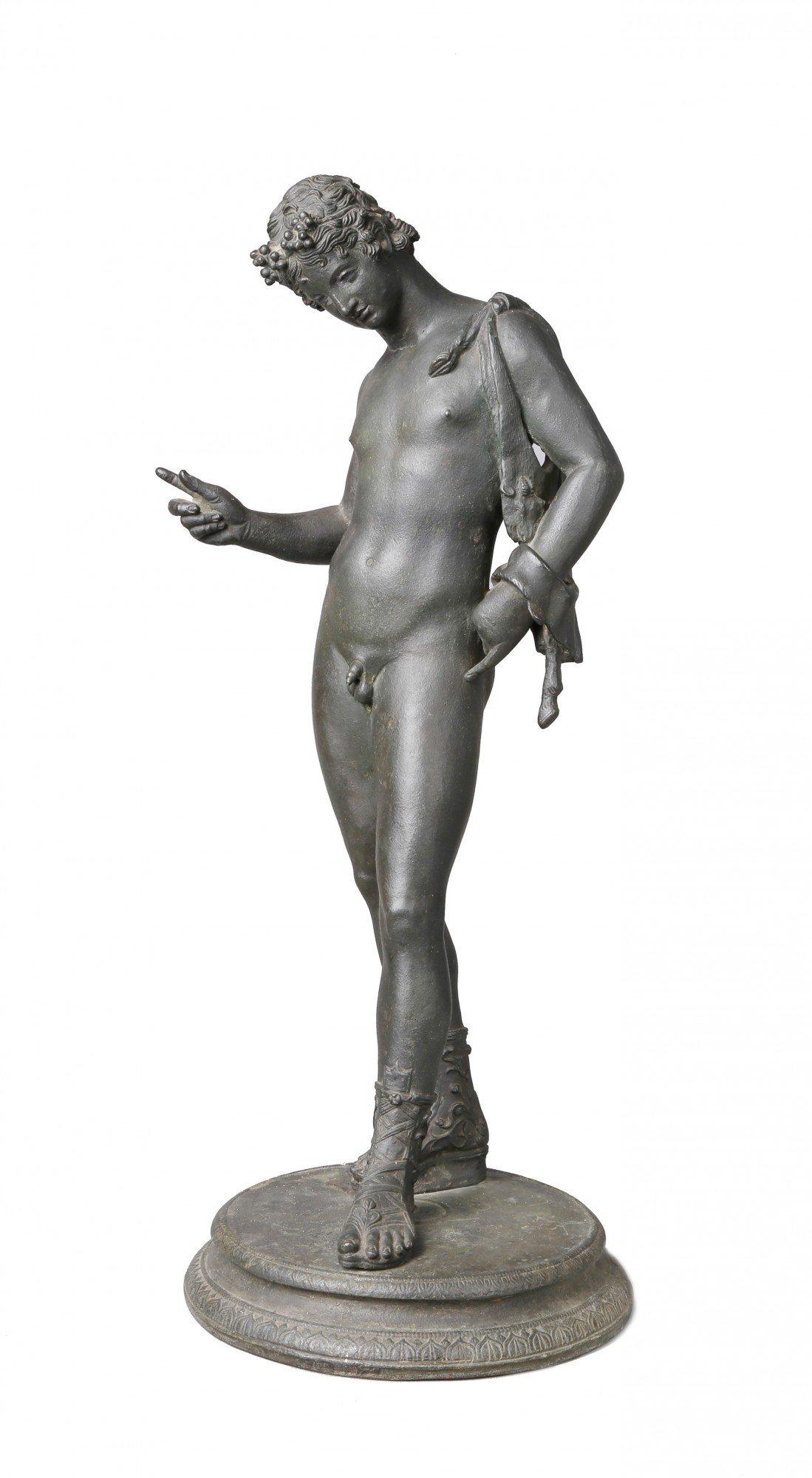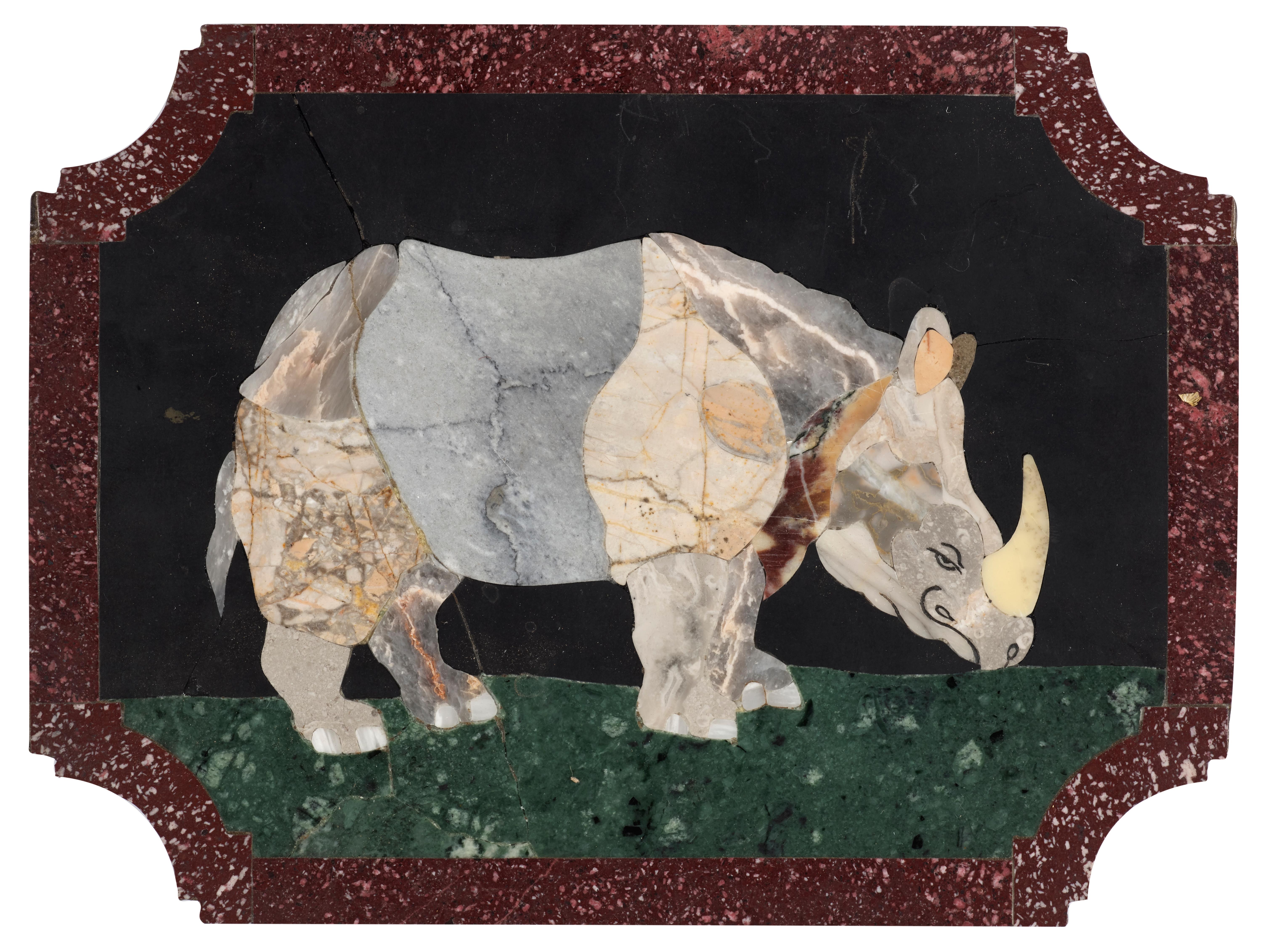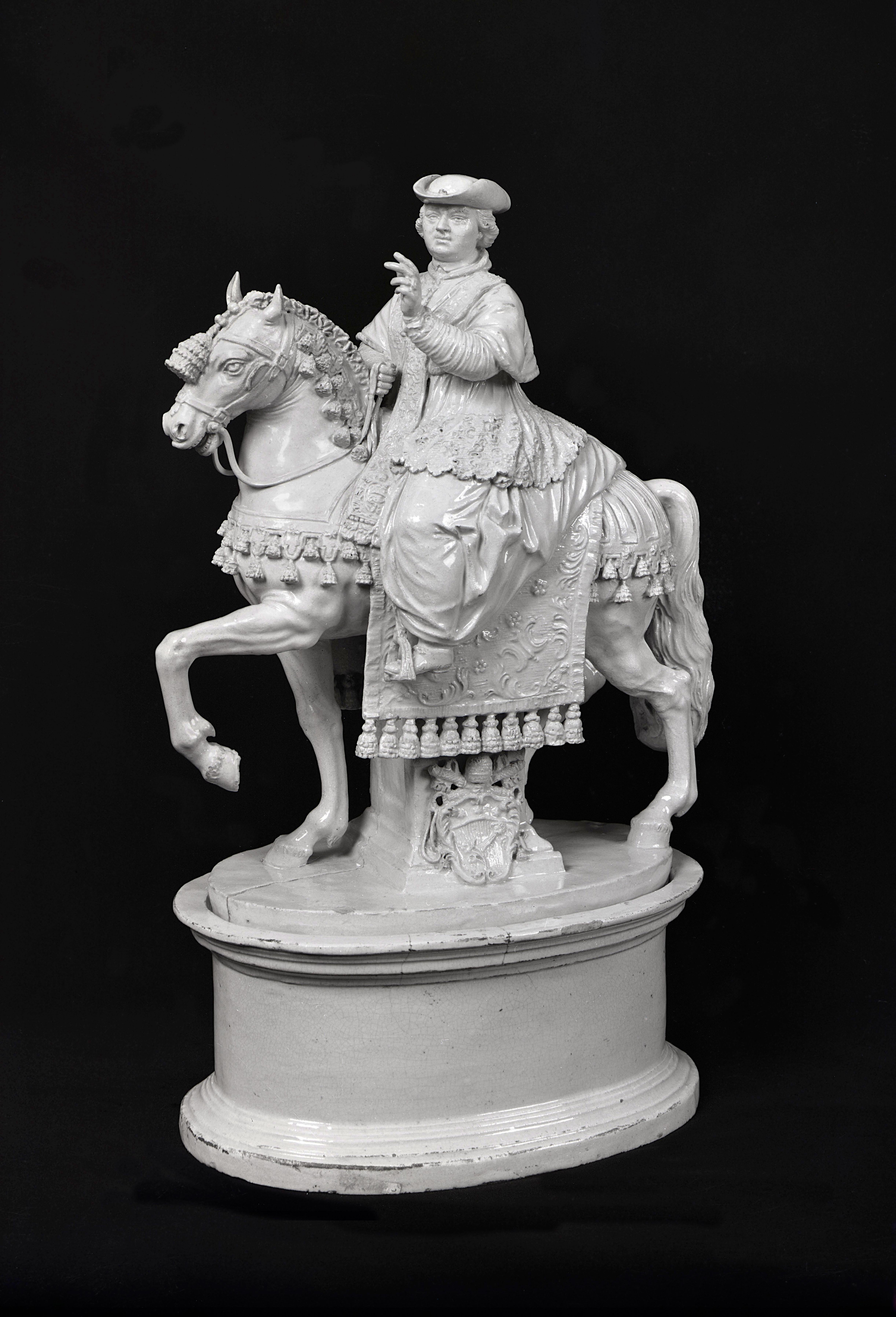Items Similar to The Philosopher
Want more images or videos?
Request additional images or videos from the seller
1 of 10
Vincenzo GemitoThe Philosophercirca 1919
circa 1919
About the Item
The Philosopher
by Vincenzo Gemito (1852-1929)
Bust in bronze with a nuanced dark brown patina
Signed "Gemito"
Stamped with the foundry mark "Fonderia Gemito Napoli - Merca di Fabbrica" and another rectangular stamp "Fonderia Gemito Napoli"
Raised on its original bronze round base
Italy
Modelled in 1883
Cast around 1919
Height 49 cm
Abandoned and left to an orphanage in his native Naples, Vincenzo Gemito grew up as the adopted son of house-worker Francesco Jadiciccio. Francesco, who was affectionately known as Masto Ciccio, would go on to serve as the model for one of Gemito’s best known works : "The Philosopher".
A similar model is exhibited at the Museo e Real Bosco di Capodimonte, Naples, Italy, and another one at the Hirshhorn Museum and Sculpture Garden, Smithsonian Institution, Washington DC, Usa.
Provenance :
Property from the Asbjorn Lunde Foundation, New York, Usa
Private collection, England
Biography :
Vincenzo Gemito (1852-1929) was a Neapolitan designer and sculptor. He became an apprentice at a very young age in the workshop of the academic painter and sculptor Emanuele Caggiano, then quickly worked in the workshop of the sculptor Stanislao Lista. At the age of twelve, Gemito entered the school of the Royal Institute of Fine Arts where he formed a lifelong friendship with Antonio Mancini. He also attended evening classes at the Domenico Maggiore Academy.
Vincenzo Gemito created “The Card Player” (Il giocatore di carti) at the age of sixteen, which was noticed when it was exhibited at the Promotrice of Naples. King Victor Emmanuel II bought it to be exhibited at the Capodimonte museum. In 1871, Gemito won first prize in the Naples fine arts competition, which entitled him to a scholarship to study in Rome. He then produced several busts and portraits including those of Francesco Paolo Michetti, Domenico Morelli and Verdi.
In 1877, Gemito moved to Paris where he established links with the painter and sculptor Ernest Meissonier. Gemito exhibited in various salons, as well as at the Universal Exhibition of 1878 in Paris. He made a silver portrait of Boldini and the baritone Jean-Baptiste Faure. His portrait of Federico de Madrazo earned him a third class medal at the Salon and the following year, Gemito won a second class medal at the Salon with a bronze statuette depicting Meissonier. He returned to Naples in 1880, where he worked at his "Water Seller".
In 1883, Vincenzo Gemito set up his own foundry, via Mergellina in Naples. In 1887, he sculpted a commissioned marble statue representing Charles V, a material that Gemito was unable to master as he would like. Although he sank into a depression, he nonetheless won great awards such as the grand prize for sculpture in Paris in 1889 and 1890, the diploma of honor from Antwerp in 1892, again the grand prize for sculpture in Paris in 1900. Working mainly in drawing and living as a recluse, Gemito nevertheless participated in the 8th Venice Biennale with drawings of common people from Naples. He also didn't resume sculpture until 1909 and his taste was gradually influenced by Symbolism.
- Creator:Vincenzo Gemito (1852 - 1929)
- Creation Year:circa 1919
- Dimensions:Height: 19.69 in (50 cm)Width: 9.06 in (23 cm)Depth: 9.85 in (25 cm)
- Medium:
- Movement & Style:
- Period:
- Condition:
- Gallery Location:PARIS, FR
- Reference Number:

About the Seller
5.0
Vetted Seller
These experienced sellers undergo a comprehensive evaluation by our team of in-house experts.
Established in 1992
1stDibs seller since 2023
Typical response time: 17 hours
- ShippingRetrieving quote...Ships From: PARIS, France
- Return PolicyA return for this item may be initiated within 3 days of delivery.
More From This SellerView All
- Lion and snakeBy Antoine-Louis BaryeLocated in PARIS, FRLion and snake n°3 by Antoine-Louis Barye (1796-1875) Bronze sculpture with a nuanced dark greenish brown patina signed "Barye" on the base old edition cast – probably from the Bary...Category
1860s French School Figurative Sculptures
MaterialsBronze
- Man's headLocated in PARIS, FRLaurent Belloni (né En 1969) Man's head Bronze cast with a nuanced black patina Signed "Belloni" on the foot Foundry mark "Susse fondeur Paris" numbered 1/8 France around 1996 hei...Category
1990s French School Figurative Sculptures
MaterialsBronze
- Ape riding on a GnuBy Antoine-Louis BaryeLocated in PARIS, FRApe riding on a Gnu by Antoine-Louis BARYE (1796-1875) A bronze group with a nuanced dark green patina signed "Barye" on the base Old cast probably by Brame France circa 1890 heig...Category
1890s French School Figurative Sculptures
MaterialsBronze
- PheasantBy François PomponLocated in PARIS, FRPheasant by François Pompon (1855-1933) Exceptional bronze with old gilded patina Cast by Valsuani Period cast France circa 1930 height 8,2 cm length 14,2 cm width 3,6 cm A simila...Category
1930s French School Figurative Sculptures
MaterialsBronze
- Dancer with TorchesBy Agathon LéonardLocated in PARIS, FRDancer with Torches by Agathon LÉONARD (1841–1923) A rare sculpture made in bronze with a nuanced light brown patina Signed on the backside "A. Léonard Sclp" Cast by Susse Frères (w...Category
Early 1900s Art Nouveau Figurative Sculptures
MaterialsBronze
- Tartar Warrior stopping his Horse, bronze sculptureBy Antoine-Louis BaryeLocated in PARIS, FRA very fine bronze equestrian sculpture with a nuanced dark greenish brown patina France model of 1845 Cast by Ferdinand Barbedienne around 1890-1900 height 37,3 cm length of the base 31,5 cm Marked with a souvenir date "22 mai 1904". Biography : Antoine-Louis Barye (1796-1875) was a French sculptor, known for his animal sculptures. His sketch practice done in the wild, according to the animals of the Jardin des Plantes in Paris, led him gradually to also practice painting. Placed early in Fourier, an engraver on steel manufacturing metal parts for the uniforms of the Great Army, he learned all areas of metal processing and became a peerless worker. He entered the Ecole des Beaux-Arts in Paris in 1818, where he received classical training in the workshop of the sculptor François Joseph Bosio and the painter Antoine-Jean Gros. He graduated in 1820, the second prize for sculpture in Rome for his "Cain cursed by God" .It was in 1831 that Barye became known to the public exhibiting then his "Tiger devouring a Crocodile", tormented and expressive work, which ranked as soon as the first Romantic sculptor, and causing admiration criticism. He now produced numerous masterpieces, often of small dimensions, that will enrich the collections of fans...Category
Late 19th Century Figurative Sculptures
MaterialsBronze
You May Also Like
- Antique Italian Grand Tour Bronze Marble Bust Sculpture Dante Alighieri 1880Located in Portland, ORA good antique Italian Grand Tour Bronze and marble bust of Dante Alighieri, circa 1880. The bronze is most likely Florentine and mod...Category
Late 19th Century Italian School Figurative Sculptures
MaterialsMarble, Bronze
- Early 19th Century Italian School Bronze, The Borghese Gladiator, c. 1810Located in Beachwood, OHEarly 19th Century Italian School The Borghese Gladiator, c. 1810 Bronze with green patination 27 x 18 x 26 inches Since its discovery in the early seventeenth century, the Borghes...Category
1810s Italian School Figurative Sculptures
MaterialsBronze
- Grand Tour Bronze Sculpture of Dionysus, 19th Century Italian SchoolLocated in Beachwood, OH19th Century Italian School Grand Tour Bronze Sculpture of Dionysus, 19th Century Bronze with black-green patination 24 x 10 x 10 inches Dionysus, in Greco-Roman religion, a nature ...Category
19th Century Italian School Figurative Sculptures
MaterialsBronze
- A set of four hard stone marquetry plaques depicting animals, Italy 18th centuryBy Antonio TempestaLocated in PARIS, FRThese four plaques represent either domestic (a horse, two rams) or exotic animals (a rhinoceros and an elephant). Made on slate slabs cut to shape (a rectangle with concave angles), they are all based on the same narrative scheme: in a frame of Egyptian porphyry, an animal in multicoloured marble is represented advancing on a green marble floor, standing out against a black slate background. These plates were made in Italy, probably in Florence or in Rome, during the 18th century. We think that their primary purpose was to decorate the drawers of a cabinet. Like many other compositions in hard stone, these plaques were inspired by engravings that were a widespread decorative repertoire in the workshops. Three of the plaques presented here were directly inspired by works by Antonio Tempesta (1555 - 1630): the Rhinoceros, the Polish Horse...Category
18th Century Italian School Figurative Sculptures
MaterialsMarble, Slate
- Pio VI blessing on horseback during the Cavalcata for the PossessionLocated in Roma, RMVolpato or Cialli manufacture, molded by Lorenzo Weber, Pio VI blessing on horseback during the Cavalcata for the Possession English white terracotta of 45 x 29 x 17 cm, datable to...Category
Mid-18th Century Italian School Figurative Sculptures
MaterialsTerracotta
- The TrapdoorBy Arturo MartiniLocated in Roma, RMArturo Martini (Treviso 1889 - Milan 1947), La Botola (1930 / 1933) Terracotta sculpture 34 x 42 x 9 cm signed lower left; label of Galleria del Milione, Milan, on back. Provenance...Category
1930s Italian School Figurative Sculptures
MaterialsTerracotta





